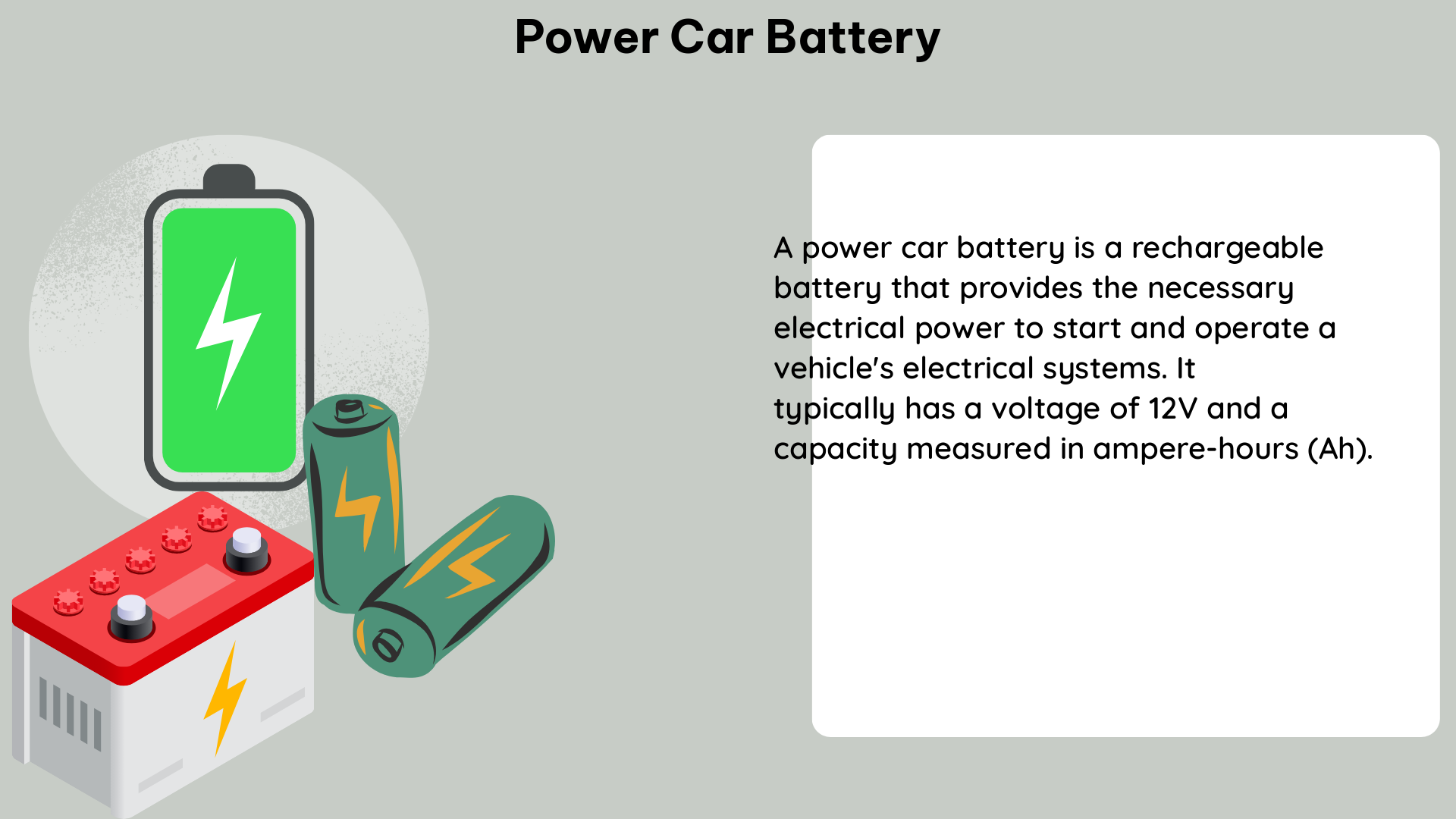The power car battery is the heart of a vehicle’s electrical system, providing the necessary energy to start the engine, power the various electronic components, and keep the car running smoothly. Understanding the technical specifications and proper maintenance of these batteries is crucial for any DIY enthusiast or car owner.
Measuring Power Capacity: Ampere-Hours and Kilowatt-Hours
The power capacity of a car battery is typically measured in ampere-hours (Ah) or kilowatt-hours (kWh). These units provide a quantifiable way to assess the battery’s ability to store and deliver electrical energy.
- Ampere-Hours (Ah): A 40 Ah battery can supply 40 amperes of current for one hour, or 20 amperes for two hours, and so on. This measure is particularly useful for understanding the battery’s ability to power electrical components for extended periods.
- Kilowatt-Hours (kWh): A 1 kWh battery can supply 1000 watts of power for one hour. This metric is more commonly used for high-capacity batteries found in electric vehicles (EVs) and hybrid electric vehicles (HEVs).
To illustrate the difference, a typical car battery might have a capacity of 45 Ah, while a Tesla Model S battery pack can have a capacity of over 100 kWh.
Cranking Power: Cold Cranking Amps (CCA)

The maximum current that a car battery can supply is referred to as its cold cranking amps (CCA) rating. This measure indicates the battery’s ability to start an engine in cold temperatures, which is crucial for reliable vehicle operation.
- CCA Ratings: A 600 CCA battery can supply 600 amperes of current for 30 seconds at 0°F (−18°C) while maintaining a voltage of at least 7.2 volts.
- Importance of CCA: Higher CCA ratings generally indicate a greater current supply capacity, which is essential for overcoming the increased resistance of a cold engine during startup.
Understanding the CCA rating is particularly important when replacing a car battery, as the new battery should have a CCA rating that meets or exceeds the original equipment manufacturer (OEM) specifications.
Technical Specifications: Voltage, Dimensions, and Weight
In addition to power capacity and cranking power, the technical specifications of a power car battery include its voltage, physical dimensions, and weight.
Voltage
- Standard Voltage: A typical car battery has a voltage of 12 volts, which is the standard for most modern vehicles.
- High-Performance Vehicles: Some high-performance vehicles may use 24-volt or even 48-volt electrical systems, requiring specialized batteries to match the system voltage.
Physical Dimensions
- Size Considerations: The physical dimensions of the battery must fit within the vehicle’s engine compartment and meet the weight distribution requirements.
- Standardized Sizes: Car batteries often come in standardized sizes, such as Group 24, Group 35, or Group 65, to ensure compatibility with different vehicle models.
Weight
- Weight Implications: The weight of the battery is an important factor, as it contributes to the overall weight of the vehicle and can affect fuel efficiency, handling, and braking performance.
- Lightweight Alternatives: Some car batteries, such as those made with lithium-ion or other advanced chemistries, can be significantly lighter than traditional lead-acid batteries, providing benefits in terms of weight reduction.
DIY Maintenance and Repair: Tools and Techniques
When it comes to maintaining and repairing power car batteries, having the right tools and knowledge is essential. A multimeter is a crucial tool for measuring various electrical parameters.
Multimeter Usage
- Voltage Measurement: Use the multimeter to measure the battery’s voltage, which should typically be around 12.6 volts for a fully charged lead-acid battery.
- Current Measurement: When measuring current, it’s important to connect the multimeter probes correctly and ensure that the multimeter is rated for the current level being measured.
- Resistance Measurement: The multimeter can also be used to measure the internal resistance of the battery, which can provide insights into its overall health and performance.
Multimeter Types
- Digital Multimeters: Digital multimeters are generally more robust and convenient to use than analog ones, but it’s important to read the specifications for accuracy and resolution.
- Analog Multimeters: Analog multimeters can be useful for quick visual inspections, but they may not provide the same level of precision as digital models.
By understanding the technical specifications of power car batteries and having the right tools and techniques, DIY enthusiasts and car owners can effectively maintain and repair their vehicle’s electrical system, ensuring reliable performance and extended battery life.
References:
- Wassiliadis Nikolaos et al., Quantifying the state of the art of electric powertrains in battery electric vehicles: Range, efficiency, and lifetime from component to system level of the Volkswagen ID.3, Journal of Power Sources, Volume 538, 2022, 10.1016/j.jpowsour.2022.231591.
- How many amps can a car battery supply?, Electronics Stack Exchange, 2016, https://electronics.stackexchange.com/questions/246085/how-many-amps-can-a-car-battery-supply
- Describing the Motion of a Battery Powered Car, The University of Akron, 2005, https://www.uakron.edu/polymer/agpa-k12outreach/lesson-plans/describing-the-motion-of-a-battery-powered-car
- An idiot’s guide to tracing parasitic battery drain on modern cars, Team-BHP, 2023, https://www.team-bhp.com/news/idiots-guide-tracing-parasatic-battery-drain-modern-cars
- Zhao, J., & Burke, A. F. (2022). Electric Vehicle Batteries: Status and Perspectives of Data-Driven Diagnostics and Prognostics. Batteries, 8(10), 142. https://doi.org/10.3390/batteries8100142

The lambdageeks.com Core SME Team is a group of experienced subject matter experts from diverse scientific and technical fields including Physics, Chemistry, Technology,Electronics & Electrical Engineering, Automotive, Mechanical Engineering. Our team collaborates to create high-quality, well-researched articles on a wide range of science and technology topics for the lambdageeks.com website.
All Our Senior SME are having more than 7 Years of experience in the respective fields . They are either Working Industry Professionals or assocaited With different Universities. Refer Our Authors Page to get to know About our Core SMEs.